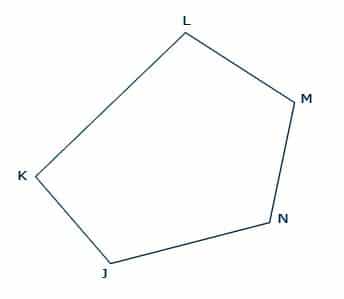Traversing in Surveying – Types and Methods
A traverse is a series of connected lines whose lengths and directions are to be measured and the process of surveying to find such measurements is known as traversing. In general, chains are used to measure length and compass or theodolite are used to measure the direction of traverse lines. The types of traverse and methods of traversing are discussed in this article.
Types of Traverse
A Traverse may be of two types. Namely,
- Open Traverse
- Closed Traverse
1. Open Traverse
A traverse is said to be open traverse when the traverse starts at one point and terminates at another point as shown in the figure. Open traverse is also called as unclosed traverse. It is suitable for surveying of roads, coastal lines, etc.

2. Closed Traverse
A traverse is said to be closed traverse when the traverse formed a closed circuit as shown in the figure. In this case, both starting and terminating points of the traverse coincide with each other. It is suitable for the survey of boundaries of ponds, sports grounds, forests, etc.

Methods of Traversing
The traversing is performed by four different methods and these methods are classified according to the survey instrument used. The methods are as follows.
- Chain Traversing
- Compass Traversing
- Theodolite Traversing
- Plane Table Traversing
This comment has been removed by a blog administrator.
ReplyDeleteOld Style Septic Tank Diagram: Septic tanks work by allowing solids to settle in the bottom of the tank and the liquid to drain out.
ReplyDeleteFamous Brands Clothing: The FashionUnited Index of Most Recognized Fashion Brands gathers the largest fashion brands in the world by brand value.
ReplyDeleteCracks in Tile Floor Foundation: Cracked tiles are usually the result of other underlying issues, mostly likely incorrect installation. However, it could also be due to extreme temperature changes, cracks in the substrate (or surface the tile is laid on), supporting too much weight or something as simple as a heavy item being dropped on them.
ReplyDeleteTraversing in surveying is fundamental for accurate land mapping, and understanding its types and methods enhances precision in projects. This guide is well-explained for learners and professionals alike. For those needing support while pursuing studies in this field, check out Oregon grants for individuals — truly helpful!
ReplyDelete